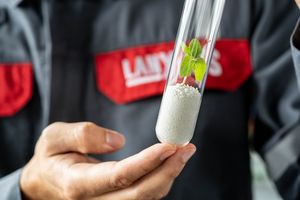
Asia
EMEA
LEWATIT® S 4528 Eco

Lewatit® S 4528 Eco is the sustainable equivalent of the conventional Lewatit® S 4528, which is produced with ISCC PLUS certified styrene according to the mass balance approach under the following licence code: ISCC-PLUS-Cert-DE102-22010005
In its production, approx. 20 % of the fossil raw materials are substituted by material from sustainable ISCC PLUS certified sources (mass balanced). As a result of the mass balance approach, the Lewatit® S 4528 Eco exhibits the same physical and chemical properties, obtaining the same performance as its conventional counterpart.
Lewatit® S 4528 Eco is a food grade, macroporous, heterodisperse, weakly basic anion exchange resin based on a styrene-divinylbenzene copolymer. It is bead-shaped and has a special bead bead size distribution for use in the following processes:
- Lewatit® WS system (fluidized bed)
- Lewatit® VWS system (compound fluidized bed)
- Standard co current regenerated system
Lewatit® S 4528 Eco is suitable in the free base form for the removal of acid and simultaneous decolorization of solutions of organic products such as sugar, gelatine, glycerin, grape must, whey, fruit concentrates, etc. Its macroporous structure ensures very good adsorption of both acid and organic substances (e.g. colorants).
These are desorbed by regeneration with caustic soda solution. Due to its low basicity, Lewatit® S 4528 Eco can be used in the treatment of products sensitive to alkali. The partial isomerisation resulting from contact with the ion exchange resin (e.g. conversion of glucose to fructose and mannose) is negligible.

